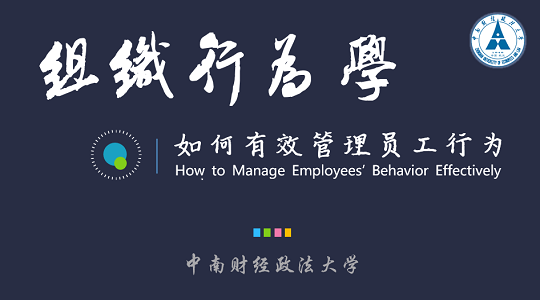
当前课程知识点:国际医学会议交际英语 > Chapter 12 Understanding Conference Etiquette > Exercise > Chapter 5 Part 1
Hello everyone
I'm Lu Fengxiang from Capital Medical University
Now we are going to talk about Chapter Five
Maintaining proper body language
Upon completion of this chapter
you are expected to know
how to handle your nervousness during your presentation
know how to behave well
during your presentation
and grasp some delivery tips
for delivering your presentation
Part one
Why is body language important
Body language is a kind of non-verbal communication
where thoughts intentions or feelings are expressed
by physical behaviors
such as facial expressions body posture
gestures eye movement touch and use of space
Body language is a vital form of communication
which can make or break your presentation
It is an essential part of emotional intelligence
which can help you bond with another person
a small group or a large audience
When your body language is deliberate
it shows that you are in control
and that you are happy to be where you are
doing what you are doing
Non-verbal communication is so powerful that
it can reinforce your verbal message or contradict it
By following the body language guidelines below
you will be able to strengthen the effectiveness
of your oral presentation
In addition
you can watch and pick up cues from other presenters
Part two
What does body language include
One Posture
Posture conveys a lot about our level of confidence
Good posture gives the impression of authority and confidence
A natural straight open body position is best
The following are not good choices
First
Arms folded across your chest
Second
Arms clasped behind the back--military style
Third
Hands on hips
Fourth
Arms down in front
folded below the waist
Fifth
Rocking back and forth
Two Gestures
From an open body position
your arms will be free to gesture
as they would in normal conversation
in order to support your words
and emphasize certain points
In most professional presentations
you can add movement by simply pointing to
the important features of your presentation
At the same time
avoid using the same gesture over and over
The following are not good choices
First
Putting your hands in your pockets
Second
Jiggling your keys or other items in your pocket
Third
Playing with your jewelry your hair or your clothing
Fourth
Pushing your glasses back constantly
Fifth
Pushing your hair aside frequently with your hand
or shaking your head to push aside your hair
Sixth
Clicking your ballpoint pen
Seventh
Taking your pen or marker's caps on and off
Eighth
Scratching your face
head or any other part of your body
Nineth
Checking your watch frequently
Tenth
Drumming your fingers on the lectern or table
Eleventh
Tapping your feet or bouncing your legs
Three Facial expressions
During a presentation
your face conveys more to your audience
than any other part of your body
This is because the audience will
be looking at your face most of the time
Your facial expressions can communicate
positive messages
such as confidence, friendliness and enthusiasm
They could also communicate fear, frustration
or lack of control
Since facial expressions reveal your true feelings
it is important to learn to convey the right messages
The most important thing you can do
is to smile a genuine smile
A smile communicates confidence and sincerity
It says that you know what you are doing
that you are happy to be there
and that you are enjoying giving the presentation
It makes you more likable
If you smile, the audience is also more likely
to smile back at you
which in turn will make you feel more comfortable
Avoid a phony forced or artificial smile
It will only reveal that you really
don't want to be there
When it's inappropriate to smile
you can use your eyes and
your eyebrows to communicate
In other words
use all of your face to support your words
Four Eye contact
Establishing and maintaining eye contact with your audience
will make you seem more confident, relaxed and interesting
It also forces the audience to look back at you
The following are preferable
First
In small groups, look at each person
in the audience for about three seconds
Second
In large groups, look at different sections of the audience
If you only look in one direction all the time
other sections of your audience will feel left out
Third
Avoid directing your attention
to the key decision maker in the group
It will make him or her feel uncomfortable
and make the rest of the audience feel ignored
Fourth
Move your head slowly from time to time
to give attention to all members of your audience equally
Fifth
During your presentation
you can comfort yourself by focusing on
members of the audience
who respond with a nod or a smile
It will help you feel more confident and relaxed
to know that your words
are having a positive effect on your audience
and that your message is being well-received
Sixth
Avoid paying attention to the audience
who seem bored or displeased
They may have other things in their minds
unrelated to your presentation
Five Voice
Your voice is your main means of communicating
the content of your message
The way you say can have a great impact on the audience
Qualities of voice include three main elements
Intonation, pitch and pace
Intonation
Intonation refers to the rise and fall of your voice
which has the potential to engage
and hold the listener or tune him out
This quality may vary greatly in different cultures
Pitch
Pitch, on the other hand
means how high or low your voice sounds
Many presenters use a thin high-pitched voice
which could sound harsh and lack in authority
If this happens to you
try consciously lowering the pitch
of your voice a little at a time
Pace refers to the speed and tempo of our speech
Varying the pace for emphasis
will make your presentation more energetic
The following will improve the tone
and quality of your voice
First
Speak up
Your voice should be loud enough
that no one in the audience should have to
strain to hear you
Project your voice to the back of the room
but don't shout either
If necessary
arrange to have a microphone available
If the members of your audience cannot hear you
all your preparation is useless
Second Breathe normally
In ordinary conversation
your sentences are short and you can complete them
without running out of breath
Do the same with your presentation
Take control of the time
however short or long it may be
One of the most obvious signs
of an inexperienced speaker is one
who keeps running out of breath during a presentation
Third
Speak with variety and enthusiasm
Use a well-modulated and varied tone of voice
as you would in a normal conversation
so that you don't sound monotonous
Vary the volume
speed and rhythm of your voice
to keep your listeners engaged
Use emphasis when necessary to draw attention to
key information and differentiate it from the rest
Otherwise use a pleasing tone and speech rhythm
Fourth
Emphasize appropriately
To help your audience receive the correct message
make sure you place emphasis on the correct words
in your sentence
It can change the implied meaning drastically
Look at the example below
I work on the weekend
In this case it means
I work then but you don't
I work on the weekend
I don't sit around or relax I WORK
I work on the weekend
Here
Emphasizing when I work
and that I am not free at that time
Fifth
Sound calm and friendly
A calm friendly-sounding voice
can invite people to make contact with you
Be especially careful when answering questions
from the audience
as a particular question may catch you off guard
even if your presentation has gone over well
Sixth
Don't rush
Maintain a moderate pace
The speed and rhythm of your speech is important
as clear communication demands appropriate pauses
to support your words
If you have a lot of materials to cover
in your presentation
the answer is not to hurry through your presentation
Think of other ways
to provide the information to the audience
You could give handouts which elaborate on your key points
You could arrange in advance
to have more time to speak
You could cut down the length of your speech
Plan to cover your main messages at a reasonable pace
rather than rushing through
Seventh
Avoid crutch words
Some people have the habit of using filler sounds
such as uh eh or ahh
while they are thinking about what to say next
Other people overuse crutch words
such as you know, basically, actually
Aside from sounding unprofessional
this can be annoying for the listeners
Six Dress
Appearance alone doesn't make the speaker
but it does influence
the effectiveness of your presentation
Dress the way you would like the audience
to perceive you
Follow some basic rules
First
Be neat
Second
Iron your clothes
Third
Shine your shoes
Fourth
Clean and trim your fingernails
Fifth
Check your make up
Six
Brush your teeth
Part three
why are we nervous during presentation
We have lots of butterflies in our stomach
when doing a presentation
The fear of public speaking is called glossophobia
It is the single most common fear
Approximately 75% of people experience this
We cannot eliminate our fear
but we CAN manage and reduce it
Why are we nervous
Nervousness is mainly reflected in the form of anxiety
which can be divided into two kinds
external anxiety and internal anxiety
External anxiety is triggered by the outside factors
like the speaking situation the unfamiliar audience
the difficult topic and even the foreign language you use
Internal anxiety is mainly caused by the personal worries
like being afraid of knowing less on the topic
than the audience or what you are saying is wrong
Part four
How can we overcome our nervousness
Handling our nerves generally comes with practice
the more presentations you do
the less nervous you will become
For overcoming your nervousness
the following suggestions might be helpful
One Identify your fears
First
I am worried that the audience
won't understand my accent
Second
My English grammar is poor
but if I were doing the presentation
in my own language
Third
My results aren't very interesting
so I can hardly create a good presentation
around them
Fourth
I panic at the idea
that I might forget what I want to say
Fifth
I get very nervous
when I am in front of a lot of people
Two
Don't focus on your English
If your content makes your message clear
a few mistakes in language will make no difference
Never equate your level of English with
your level of intelligence and your proficiency
Remember as a qualified professional
you have worked hard to get to
where you are today
Public speaking is only a small part
of your overall professional ability
Whether you're good at public speaking or not
has nothing to do with your
value as a person
It's simply a skill that
you can learn and become better at with practice
If you make an English mistake
while doing your presentation
don't worry
In fact
the audience may not even notice it
don't correct yourself
The audience is made up of researchers
wanting to hear your results
they are not English teachers wanting to
assess your linguistic proficiency
The way you relate to the audience
and involve them is more important
than any grammatical
or nontechnical vocabulary mistakes you may make
-Exercise
-Exercise
-Exercise
-Exercise
-Exercise




